A History of
John Deere
Experimental Tractors
|
|
Deere and Company's Experimental Tractors
The Melvin Tractor
July 01, 1912 C. H. Melvin was given the assignment to produce a
working tractor for Deere and Company. He was to design a small
plow tractor with removable plows. With $6,000 in his budget, Melvin
designed a 3 wheel model that underwent testing from 1912 to
early 1914.
The Melvin tractor was the first tractor to have the John Deere
name on it, however it wasn't much of a success and only one model
was ever produced.
One big contribution that Melvin did make with his tractor was the
perfection of a power lift mechanism for the plows (which by the way,
weren't removable).
The Melvin Tractor
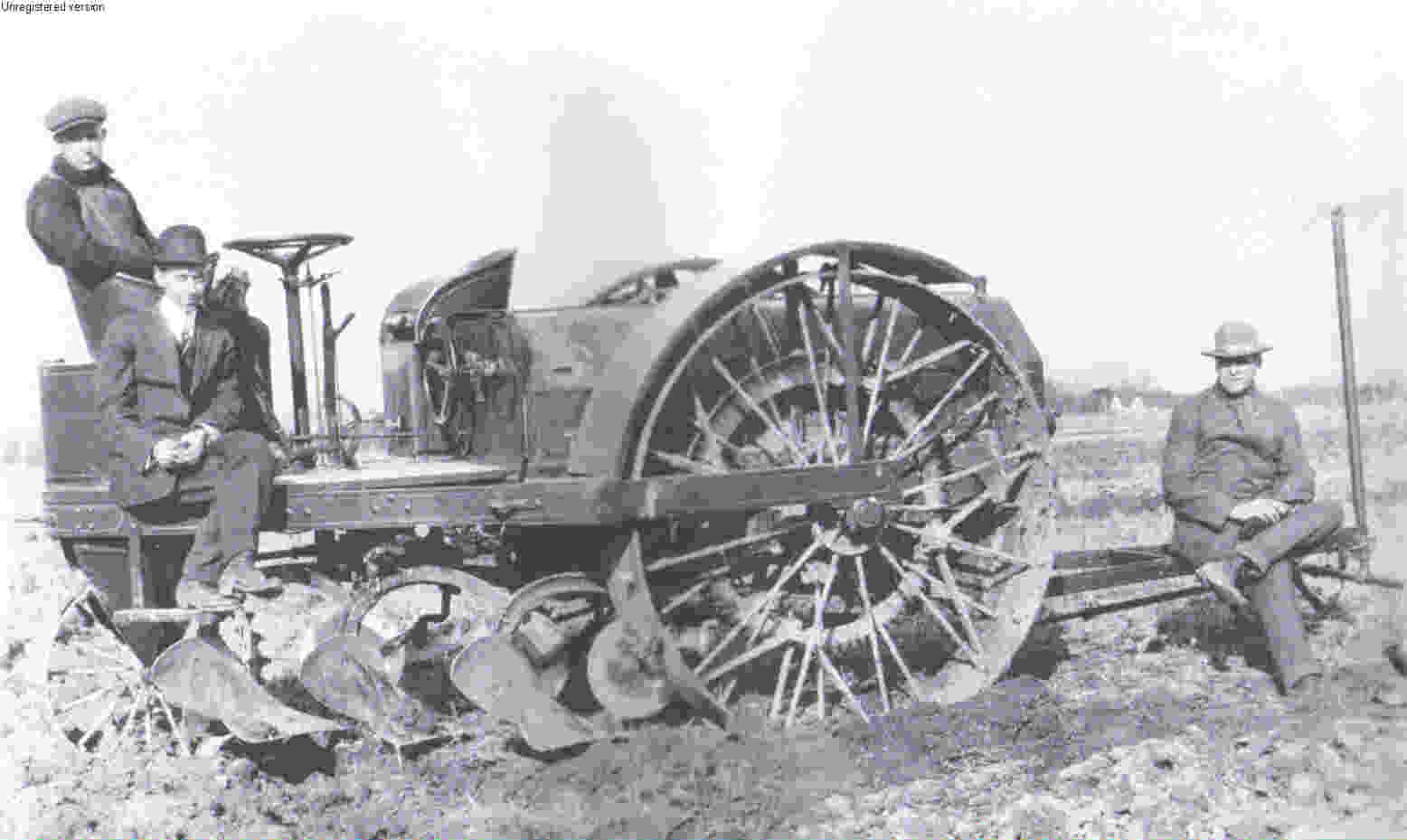
The Dain Tractor
Joseph Dain, Sr. joined Deere and Company as a board member in
October 1910 when Deere bought out his company, the Dain
Manufacturing Company.
On May 27, 1914 Dain was given the job of finding out if a tractor
could be built selling at around $700. On September 8, 1914 Dain
reported back to the board that he believed he could build a small
3 plow tractor for about $3,000.
December 16, 1915 Dain had built and tested 3 tractors.
March 14, 1916 Deere and Company's board entered into the
tractor business when they approved Dain to go ahead with production
of the Dain Tractor. He was given floor space at the John Deere
Marseilles Plant to build the first 10 all wheel drive machines
as soon as practically possible.
On July 13 it was reported that 5 machines were being built at
Marseilles and one at Moline with Waukesha engines, one had been
shipped to North Dakota and was performing satisfactory work.
Dain was working with a Mr. McVicker to develop a new engine for
the tractor which would have better accessibility of parts.
Original cost figures for these machines were $736 using 1.25 steel
and $761 using 2.25 steel. $200 was for the motor. Suggestion to
the board was to market the 3 plow tractors for $1200.
After much testing and reviewing, on November 19,1917 the board
approved construction of 100 Dain All Wheel Drive tractors with
Joseph Dain Jr. to continue the work of his father. On October 31,
1917 Joseph Dain Sr. had passed away.
On March 14, 1918 Deere and Company bought the Waterloo
Gasoline Engine Company with their Waterloo Boy tractor. 100
Dain tractors were still manufactured at the Tenth Street factory in
East Moline and all were sent to South Dakota.
It was decided to discontinue production of the Dain Tractor and
put all efforts toward promoting the proven
Waterloo Boy tractor
under the Deere name.
Dain Tractor
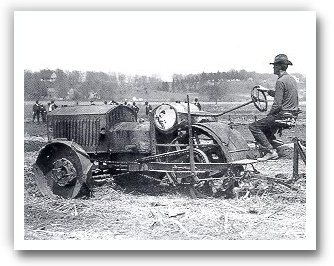
The Sklovsky Tractor
In 1915 Max Sklovsky was put in charge of developing a 2 plow tractor.
His first design, the Model A-2 was an all wheel drive, three wheeled
tractor built at the Marseilles plant with a Northway 4 cylinder engine.
Tractor performance was acceptable except that it was almost
impossible to steer.
The Model B-2 was tested with much improved steering and satisfactory
performance in the field. It was figured that the cost of manufacture to
be just over $400 which would translate to a sales price of about $900.
However development was stopped as Deere and Company moved
into the war effort.
Max Sklovsky driving his Sklovsky Tractor
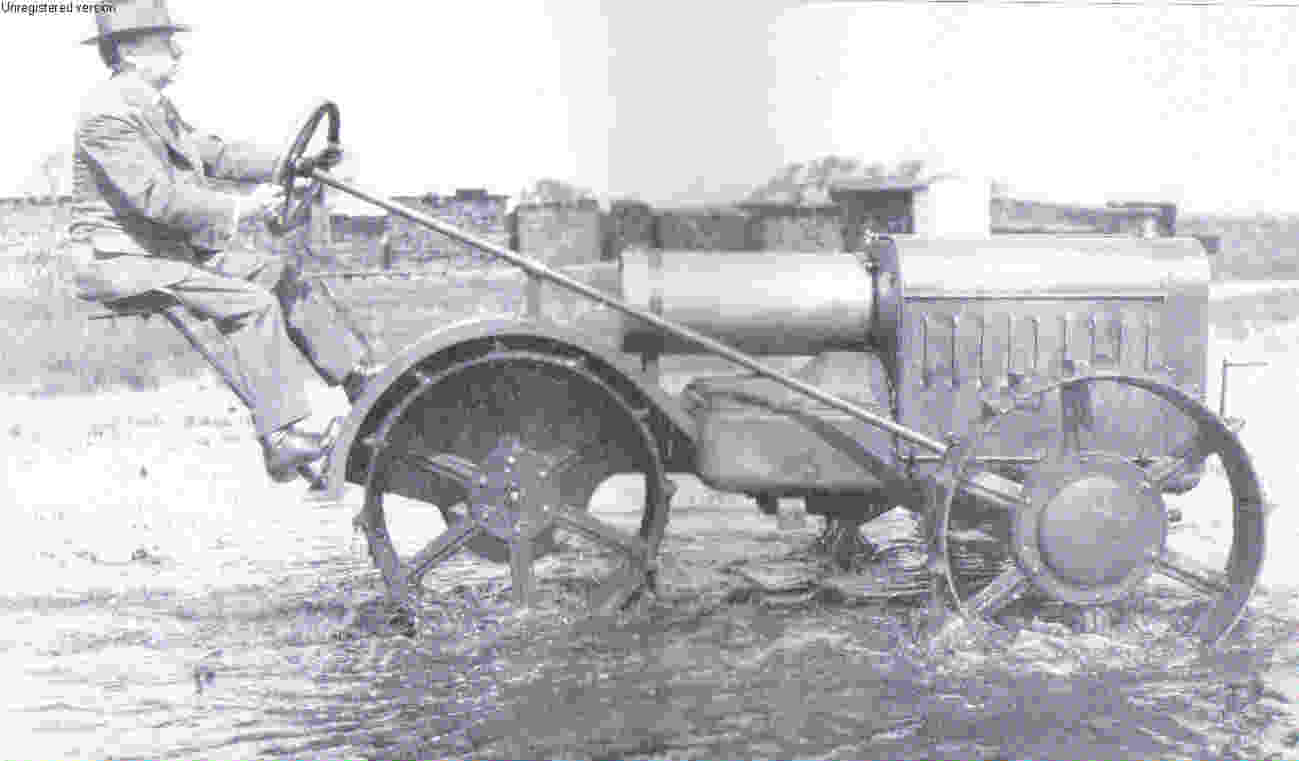
The Brown Motor Cultivator (Tractivator)
March 30, 1916 approval was given to Theophilius Brown
(superintendent of the Marseilles Plant) to build a motorized, one
row cultivator. By June Brown had mounted a 7 1/2 HP New Way
air cooled engine on a truck supported by manure spreader wheels,
having an adaptation of a Deere KC cultivator on it.
After numerous design changes, including the addition of a twin cylinder
hopper cooled engine designed by McVickers and built by the
Associated Manufacturers Company, Deere approved the building
of 25 Tractor Cultivators. On February 17, 1917 the first Tractivator
was completed.
25 units were then completed and sent to branch houses for testing.
All 25 units were returned with numerous complaints. The one row
design was dropped.
Using an Avery 4 cylinder motor with friction transmission, in June of
1917 Walter Silver built a two row motor cultivator. The board
directed him to continue development at the Tenth Street factory.
With the help of J. B. O'Donnell (who had tested the first two row
cultivator) some design changes were made and 5 units were produced
by June of 1918.
During the spring of 1921 an experimental single row motor cultivator
was built.
Board action on October 1921 stopped all development of a motorized
cultivator citing the poor farm economy and the desire to focus on the
redesign of the Waterloo Boy Tractor.
Brown Motor Cultivator (Tractivator)
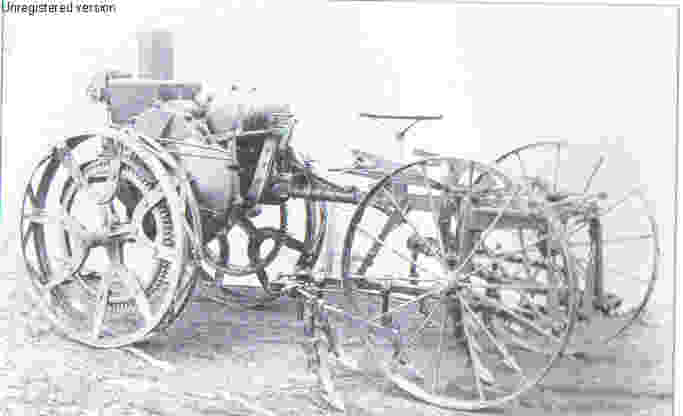
Tractor Trivia
In 1926 the name of the Waterloo Gasoline Engine Company was changed
to John Deere Tractor Company. By then Deere and Company was
the largest manufacturer of steel plows and the second largest manufacturer
of agricultural machinery in the U. S. International Harvester Company
was the largest.
In 1912 Deere and Company advertised in their own sales catalogs a
large 4 cylinder, 30 horsepower tractor, the Gas Traction Company's
Big Four 30 tractor. Pulling a Deere 7 bottom plow, it had won a
Gold Medal at the Winnipeg tractor trials in 1910. The Big Four 30
had 8 foot high rear steel wheels and weighed about 10 tons.
Big Four Tractor
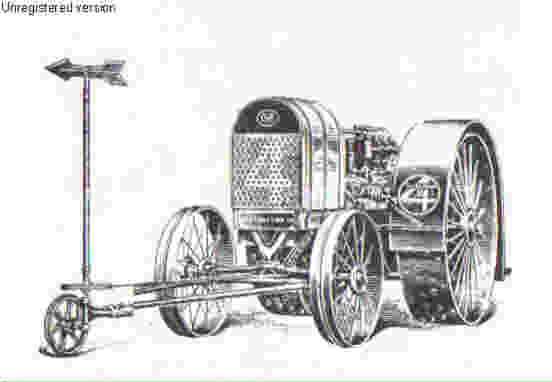
By 1914, Twin City Model 40 tractors were appearing in Deere export
sales literature, the Model 40 was a 40-65, 4 cylinder engine at 500
rpm and was capable of pulling a 10 bottom plow.
In 1895 Deere and Company made $150,000 exclusively from the
sale of bicycles! In 1896 John Deere had their own private label bicycle.
Twin City Model 40
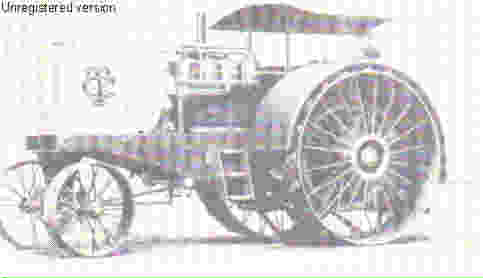
Next: Model D Tractor
Back to Waterloo Boy Tractors
History of John Deere
Tractors
|